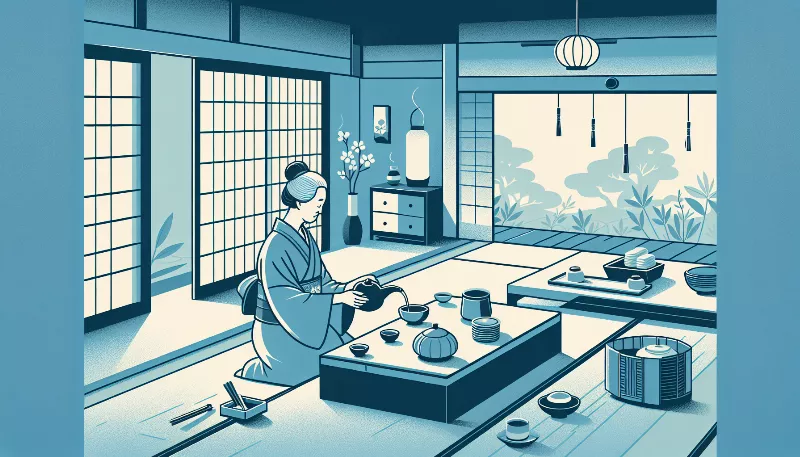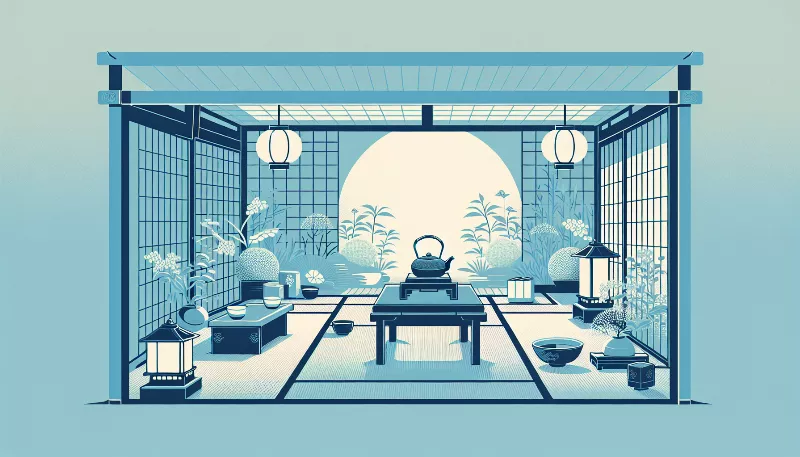Can you explain the different utensils used during a Japanese tea ceremony?
Discover the elegance of Japanese tea ceremonies with our guide on the essential utensils. Immerse in tradition and enhance your tea experience!

Embarking on a Cultural Journey
Imagine stepping into a serene space, where every movement is deliberate and every item has its purpose. Welcome to the Japanese tea ceremony, also known as Chanoyu, Sado, or Chado. This traditional ritual is steeped in history, aesthetics, and philosophy, offering a meditative respite from the hustle and bustle of daily life. But what truly brings this ceremony to life are the various utensils used, each playing a critical role in the preparation and enjoyment of the tea. Let's delve into the enchanting world of these tools and discover how they contribute to the harmony and balance of the Japanese tea ceremony.
The Chawan: A Bowl of Beauty
At the heart of the ceremony lies the chawan, the tea bowl from which guests sip the frothy matcha. Each chawan is a work of art, often handcrafted by skilled artisans. The size, shape, and style of the bowl can vary depending on the season and the specific tea gathering. In the summer, bowls are typically shallower to allow the tea to cool, while in the winter, deeper bowls are used to retain warmth. The chawan is not merely a vessel but a symbol of the season and the care put into the ceremony.
The Chasen: Whisking with Grace
The chasen is a delicate bamboo whisk that's essential for creating the perfect consistency of matcha. With its fine tines, the chasen is meticulously carved from a single piece of bamboo. The host uses swift, W-shaped motions to whisk the powdered tea with hot water, resulting in a smooth, lump-free beverage with a light layer of foam on top. The chasen is a testament to the ceremony's blend of simplicity and sophistication.
The Chashaku: Measure of Elegance
When it comes to measuring the matcha, the chashaku is the tool of choice. This slender bamboo scoop is carefully crafted to hold just the right amount of powdered tea. The host gracefully uses the chashaku to transfer the matcha to the chawan, a gesture that embodies the precision and care inherent in the ceremony. The chashaku's gentle curve and understated beauty make it a subtle yet significant participant in the ritual.
The Mizusashi: The Water Jar
The mizusashi is a lidded water jar that holds the fresh water used to replenish the kettle during the ceremony. It's an embodiment of purity and tranquility, often made of ceramic or lacquerware. The mizusashi is placed within the host's reach, and its design harmonizes with the other utensils, contributing to the ceremony's visual poetry.
The Kama: Kettle of Warmth
The kama is the iron kettle in which water is heated for the tea. Suspended over a charcoal brazier called a furo or set into a hearth known as a ro, the kama is a symbol of the hearth and home. Its presence evokes a sense of warmth and hospitality, inviting guests to relax and enjoy the comforting embrace of the tea experience.
The Futaoki and the Hishaku: Rest and Ladle
The futaoki is a small bamboo rest used to hold the lid of the kettle and the hishaku, a bamboo ladle used to pour water. These items may seem minor, but they play a crucial role in maintaining the ceremony's flow and grace. The futaoki ensures that the lid does not touch the tatami mat, preserving cleanliness and order, while the hishaku allows the host to control the water's pour with precision and elegance.
Conclusion: A Symphony of Utensils
The Japanese tea ceremony is a symphony where each utensil plays a vital role in creating a harmonious experience. From the humble chashaku to the robust kama, these tools are not just functional; they are carriers of tradition and beauty. As you participate in or observe a tea ceremony, take a moment to appreciate the craftsmanship and thoughtfulness behind each utensil. Together, they weave a tapestry of cultural richness that transcends the simple act of drinking tea, turning it into an art form that delights the senses and soothes the soul.






